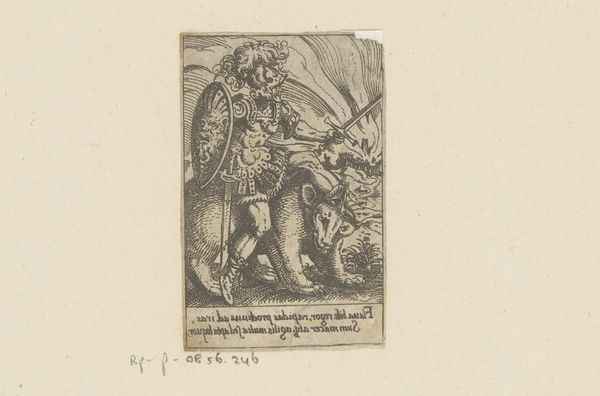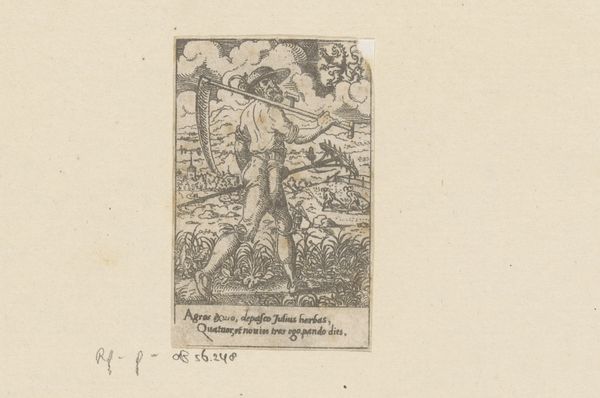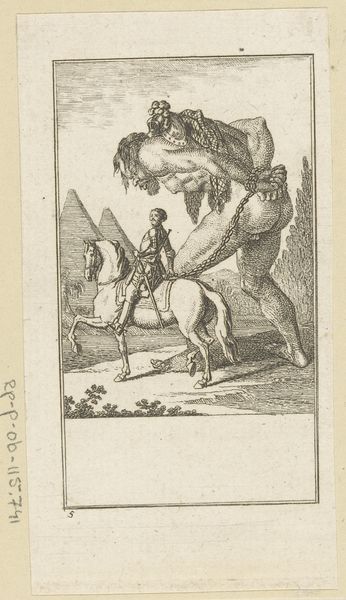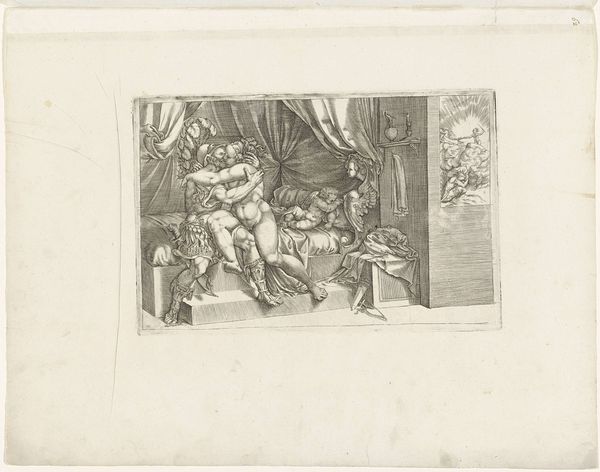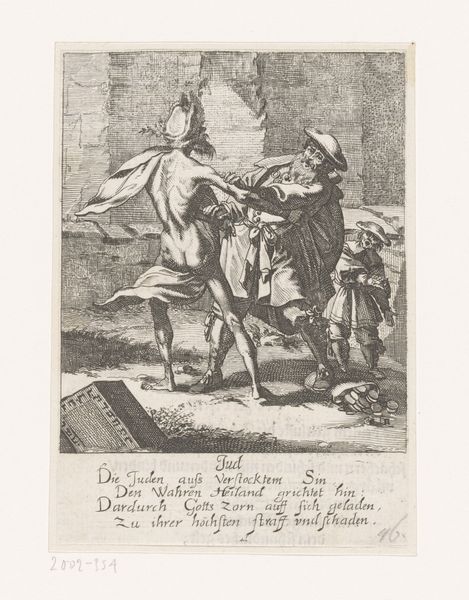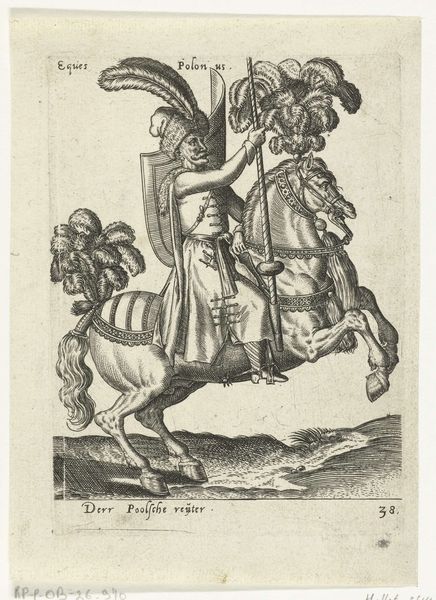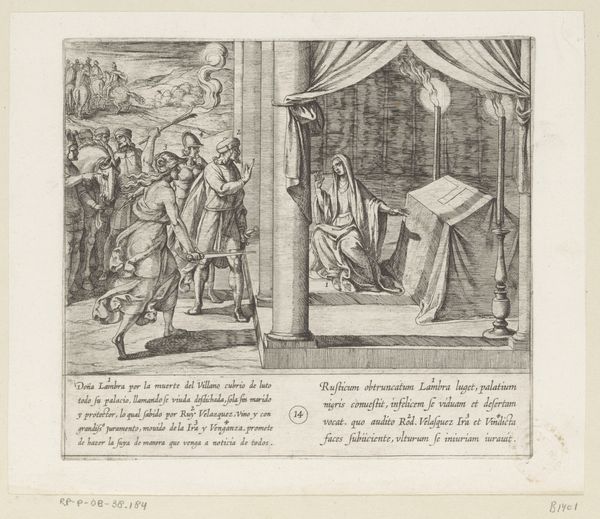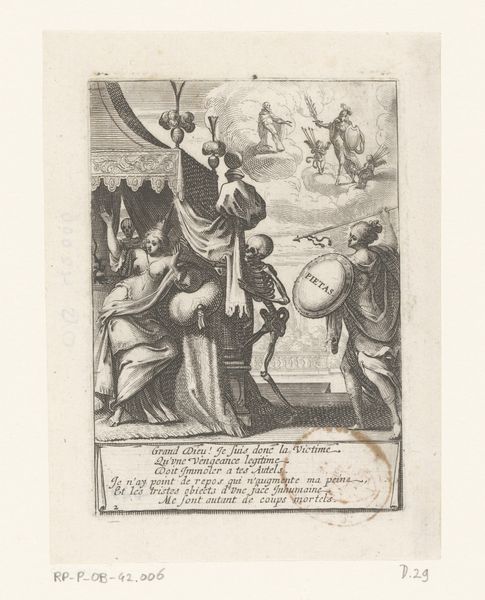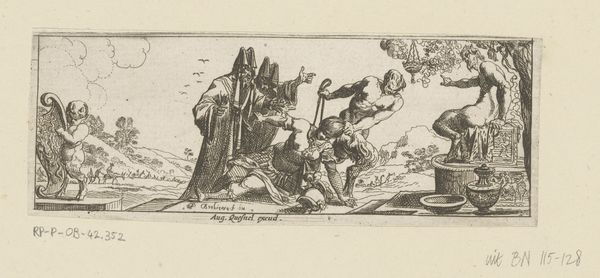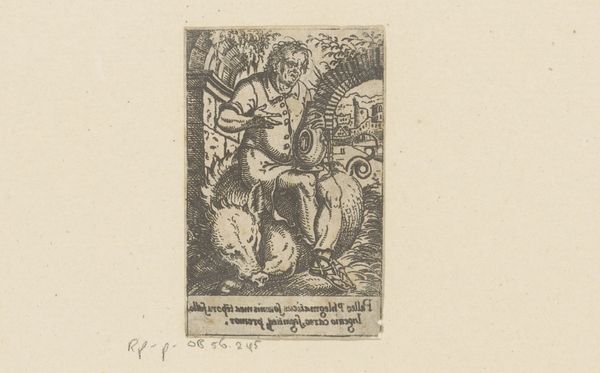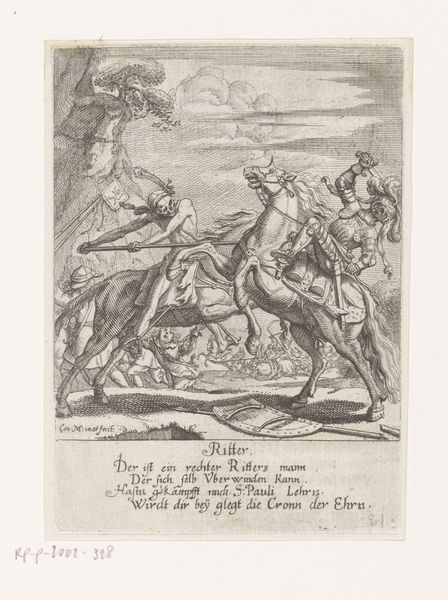
print, woodcut
#
narrative-art
# print
#
woodcut
#
history-painting
#
northern-renaissance
Dimensions: height 50 mm, width 70 mm
Copyright: Rijks Museum: Open Domain
Editor: So, this is "Joab Killing Amasa," a woodcut print from around 1530, made by an anonymous artist and currently housed in the Rijksmuseum. There's something quite brutal about its simplicity. What are your initial thoughts on it? Curator: The directness of the scene, the stark contrast of black and white, forces us to confront the raw reality of power. Think about the 16th century political context – religious upheaval, emerging nation-states, constant power struggles. This image isn't just illustrating a biblical story; it's participating in a discourse about betrayal and violence. What kind of audience do you think it speaks to, and what might it be telling them? Editor: I suppose it was meant to illustrate a moral story, like "don't trust your generals?" Curator: It’s not that simple, is it? The image reduces Amasa, the one being murdered, almost caricaturized in a friendly embrace that leads to brutal betrayal, which speaks to complex social commentaries of the time period: What does it mean to be vulnerable, a victim of deception when social status, religion and government is often obscured to ordinary people? How do visual representations impact our understanding of it? How do these forms influence one another in their intent to be convincing, regardless of truth? Editor: That makes the whole piece more unsettling. The setting feels like an empty stage for political moves, but the cost is life itself. What do you make of that? Curator: The composition heightens the sense of political theater playing out within an unstable society, where trust is a dangerous commodity. Does knowing this inform your personal interpretation or make it even more affecting? Editor: Definitely more affecting. Thinking of it as more than just a scene, it helps to highlight underlying truths. Curator: Exactly, and considering art's power in shaping perception, such insights offer ways to challenge our understanding of this era.
Comments
No comments
Be the first to comment and join the conversation on the ultimate creative platform.
